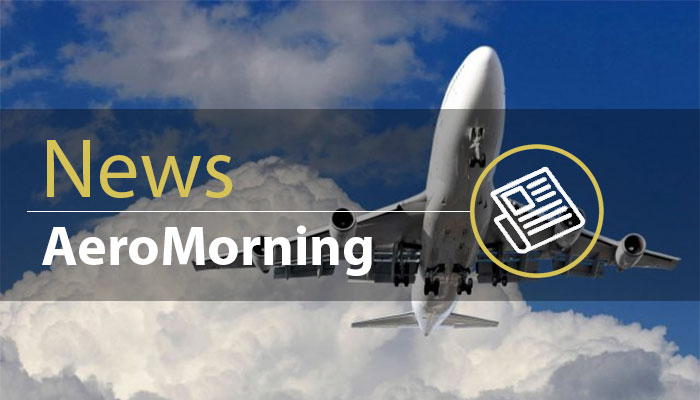Bio: Emily Newton is a technology journalist. She is Editor-in-Chief of Revolutionized, an online magazine exploring the latest innovations.
The air travel industry has always been a hub of innovation. While the sector has come a long way since its inception, shifting consumer expectations and new challenges continue to push aviation technologies forward. This year alone saw many impressive aircraft cabin innovations.
As aviation continues to recover from its pandemic slump, airlines have realised they must adapt to stay competitive. These seven cabin innovations can help them embrace that adaptation, meeting passengers’ growing safety and comfort demands.
1. Device Charging Stations
Mobile device charging is virtually everywhere on the ground, but it’s proved challenging in the air. That may not be the case for long, with new personal device charging stations premiering at conventions like Aircraft Interiors Expo.
The most noteworthy of these is Thales Avionics’ Pulse system. Pulse is slim enough to fit in every aircraft seat and offers USB-A, USB-C and wireless charging. Most importantly for airlines, it also uses a power management system to allocate the plane’s electricity dynamically, helping avoid electrical issues.
While systems like this may seem straightforward, they provide an essential service. Consumers spend a third of their time awake on their phones, so the demand for convenient charging — especially for long flights — is growing.
2. Air Purification Systems
Understandably, another leading concern for passengers today is indoor air quality. Several recent aircraft cabin innovations offer solutions as the COVID-19 pandemic raises awareness of airborne disease transmission.
Pexco Aerospace’s AirShield technology clips onto existing cabin air vents to improve their airflow. This clip-on system directs air between passengers, creating a barrier to minimise the transmission of airborne contaminants, hence its name. These barriers also push air toward the cabin’s HEPA filters faster, ensuring more consistent, clean airflow to improve comfort and safety.
Another air purification innovation comes from Gulfstream in its new G280 business jet. The aircraft cabin includes a plasma ionisation system to purify the air, positively charging ions to kill airborne pathogens. Similar technologies in other planes could help further reduce the spread of diseases like COVID-19.
3. Predictive Maintenance Technologies
One vital safety trend in aircraft today is predictive maintenance. Cabin safety equipment typically requires testing every few years, but things can go wrong between those intervals. While most airlines check for issues before every flight, these approaches are still slow and largely reactive.
Predictive maintenance offers a solution by alerting relevant parties when sensors detect factors that could indicate future issues. Several airlines and technology companies are developing and implementing these systems to provide real-time insights into cabin safety features. When something starts to degrade, sensors alert ground teams even while the plane is in the air so they can prepare beforehand.
This approach to maintenance ensures airlines can resolve potential issues faster. Both passenger safety and wait times improve as a result.
4. Convertible Seating
While passenger safety is the most crucial factor, it’s also important not to overlook convenience and comfort. One comfort-related trend several aircraft cabin innovations this year exhibit is a move toward convertible seating.
Aviointeriors and LIFT both debuted aircraft seats that easily transform into various seating arrangements to meet more passengers’ and airlines’ needs. These wider, more modular seats can convert into lie-flat seating for luxury sections or stay upright to fit more people in economy sections. This flexibility lets airlines meet a broader range of customer needs with the same equipment.
Airlines’ seat pitch has shrunk over the years, leading to dissatisfied and uncomfortable passengers. Convertible seating could help accommodate more people’s comfort needs, improving customer satisfaction and brand image. The cost savings from using the same seats in every section would provide an added boon to airlines.
5. Recyclable Cabin Panels
Sustainability has also become increasingly important to the air travel industry. While advances like electrification or alternative fuels may yield the most considerable improvements in this area, some cabin changes can help, too. Using cabin panels made from recyclable composite materials instead of metal or conventional plastic is one such way forward.
Swedish manufacturer Diab introduced a 100% recyclable cabin panel at the Crystal Cabin Awards. These aircraft parts use thermoplastics to extend their service lives and reduce their environmental impact. Because they can be produced in a one-step 3D printing process, they can also minimise costs.
Switching to composite parts would also improve sustainability through improved fuel efficiency. These parts are lighter, so using composite brackets in 100 planes could reduce CO2 emissions by 357 million tonnes in some scenarios.
6. Tray Table Device Holders
Other aircraft cabin innovations are more straightforward but still provide needed improvements. J&C Aero’s new personal electronic device holders are an excellent example.
These holders fit into aircraft tray tables to flip up and keep passengers’ electronic devices upright. That way, customers can watch movies or TV shows they might have downloaded beforehand without having to hold their phones or tablets in their hands. It’s a small and relatively simple change, but one that makes long flights more convenient.
These device holders and similar structures are particularly helpful for economy passengers, who may not have screens in the seats in front of them. Installing these systems could help airlines entice passengers back from the pandemic slump, aiding quicker recoveries.
7. Personal Refrigeration Units
Another convenient innovation for passengers is Collins Aerospace’s Space Chiller. The Space Chiller is a personal refrigeration unit, letting passengers in some sections keep their food and beverages cold while still in arm’s reach.
The key to this technology is using a thermoelectric heatsink instead of traditional chemical-based refrigerants. This lets the system provide cooling in a much smaller and less energy-intensive package, helping it fit by passengers’ seats.
Personal refrigeration can impress customers, but perhaps more importantly, it reduces the burden on airline staff. European airlines have thousands of open positions as labour shortages persist, making it challenging to serve an entire plane efficiently. If some passengers can use their own coolers, they’ll require less from flight attendants, mitigating the impact of the shortage.
Aircraft Cabin Innovations Improve Both Safety and Comfort
These aircraft cabin innovations paint a promising picture of the future of air travel. New technologies let airlines become safer and more convenient for everyone involved.
As airlines embrace these systems and similar technologies, the industry could recover from recent challenges in less time. Future business may even exceed pre-pandemic levels as the promise of increased comfort and safety draws people in. Emily Newton for AeroMorning






Be the first to comment on "The Top 7 Aircraft Cabin Innovations of 2022"